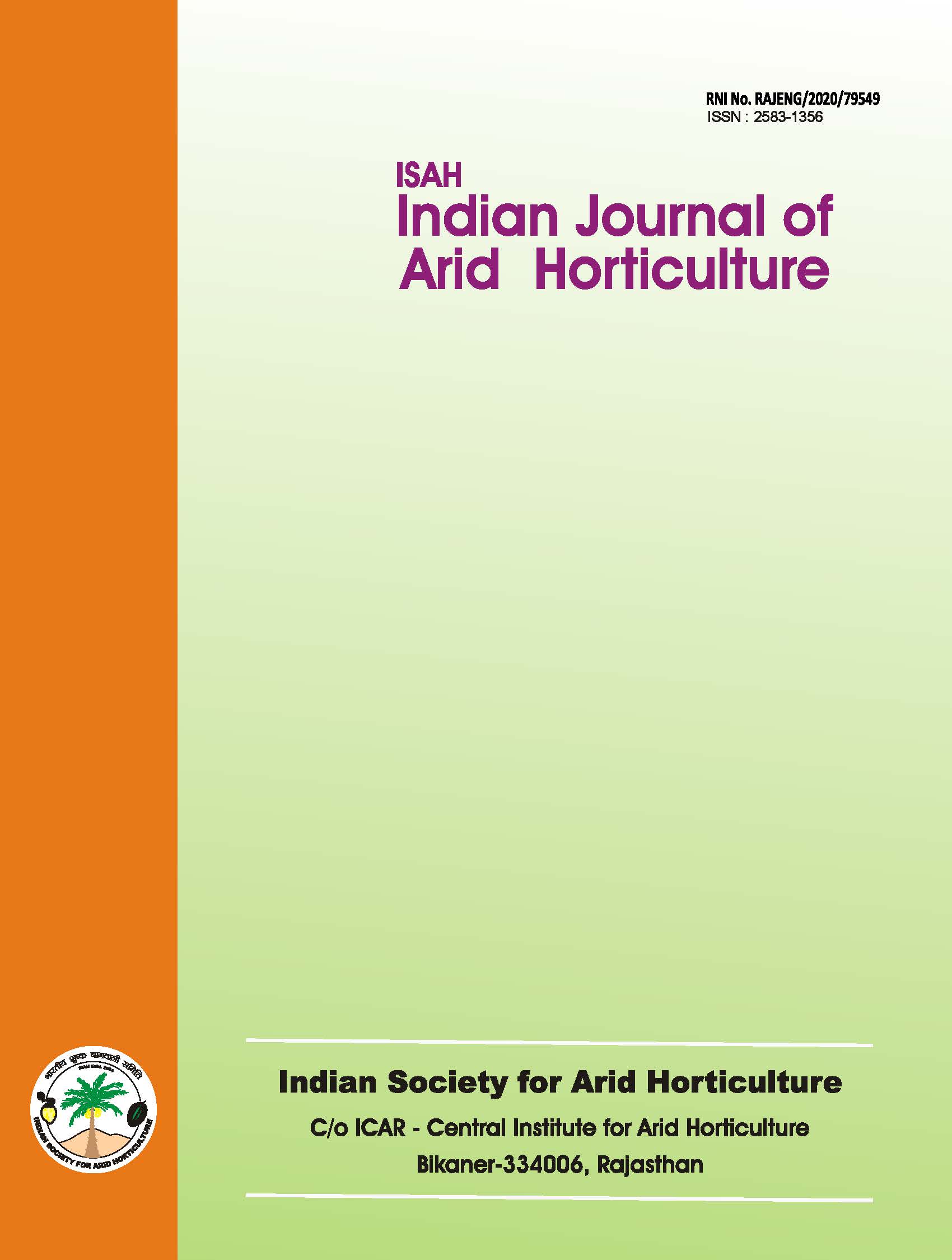Status of Alternaria blight of watermelon under Rajasthan conditions
Keywords:
biotic, Alternaria, diseases, landraces, appearance traitsAbstract
Watermelon [Citrullus lanatus (Thunb) Mansf.] is one of the most widely cultivated crop in the world. China is the leading country in production of watermelon followed by Turkey, United States, Iran and Republic of Korea (Huh et al., 2008). This crop is also known as Tarbooj, Kalinda and Mateera in India. It accounts for 6.8% of the world area devoted to vegetable production (Goreta et al., 2005). Farrukhabadi, Moradabadi, Faizabadi of Uttar Pradesh and Mateera of Rajasthan are an important landraces of watermelon grown by farmers using their own saved seeds. It has sufficient variability for high productivity, quality, appearance traits such as shape, size, colour and is able to withstand damage from biotic and abiotic factors (Wehner et al., 2001). It is subjected to attack of a number of fungal, bacterial and viral diseases, which inflict heavy damage on yield of the crop every year. Among the fungal diseases, Alternaria blight is an important disease in Rajasthan and other watermelon growing states of India. This disease needs regular monitoring for evolving effective control measures. Keeping the above facts in mind, a survey was conducted to record the status of Alternaria blight in four districts of Rajasthan at farmer's fields and the results are presented in Table 1 and Fig. 1.Downloads
References
Basir, S. 2005. Studies on angular leaf spot (Phaeoisariopsis griseola) of french bean (Phaseolus vulgaris L.). Ph.D. Thesis submitted to Sher-E-Kashmir Univ. of Agricultural Sciences & Technology-Kashmir, Srinagar (J&K), 120 pp. Chauhan, V. B., Singh, V. B. and Singh, A. K. 2002. Status of Phytophthora blight of pigeonpea in Eastern Uttar Pradesh. Ann. Pl. Protec. Sci. 10:402-404. Goreta, S., Perica, G, Dumicic, G., Bucan, L. and Zanic, K.
2005. Growth and yield of watermelon on polyethylene mulch with different spacings and
nitrogen rates. Amer. J. Hort. Sci. 40: 366-369. Huh, Y.C., Solmaz, I. and Sari, N. 2008. Morphological characterization of Korean and Turkish watermelon germplasm. 1" Cucurbitaceae 2008, Proceedings of the IX EUCARPIA meeting on genetics and breeding of Cucurbitaceae (Pitrat, M. ed.), INRA, Avignon (France), May 21"-24". Singh, A. K., Tripathi, D. P. and Singh, S. B. 2006. Effect of different dates of transplanting on disease intensity and yield of tobacco caused by
Alternaria alternata. Ann. Pl. Protec. Sci. 14: 251-252.
Singh, J., Singh, R. B. and Singh, S. K. 2003. Status of web
blight of mungbean in Eastern Uttar Pradesh. Ann. Pl. Protec. Sci. 11: 173-175. Wehner, T. C., Shetty, N. V. and Elmstrom, G W. 2001.
Breeding and seed production. In: D.N. Maynard (ed.). Watermelons: Characterization, production and marketing. ASHS Press, Alexandria, Va. pp. 27-73.

